Internal company updates often get buried in Slack threads or lost in inboxes. A corporate social network offers a more structured way to align everyone in your business in real time.
In this article, you’ll learn why a corporate social network is worth exploring for a small business and how to reap the benefits without overwhelming your team. You’ll discover common SMB use cases, practical alternatives and tips to boost adoption.
What is a corporate social network?
A corporate social network is a private, internal platform that helps employees communicate and collaborate effectively.
Corporate social networking tools include platforms like Microsoft Viva Engage (formerly Yammer). You can also use specialized tools like Jostle or Igloo Software (below).
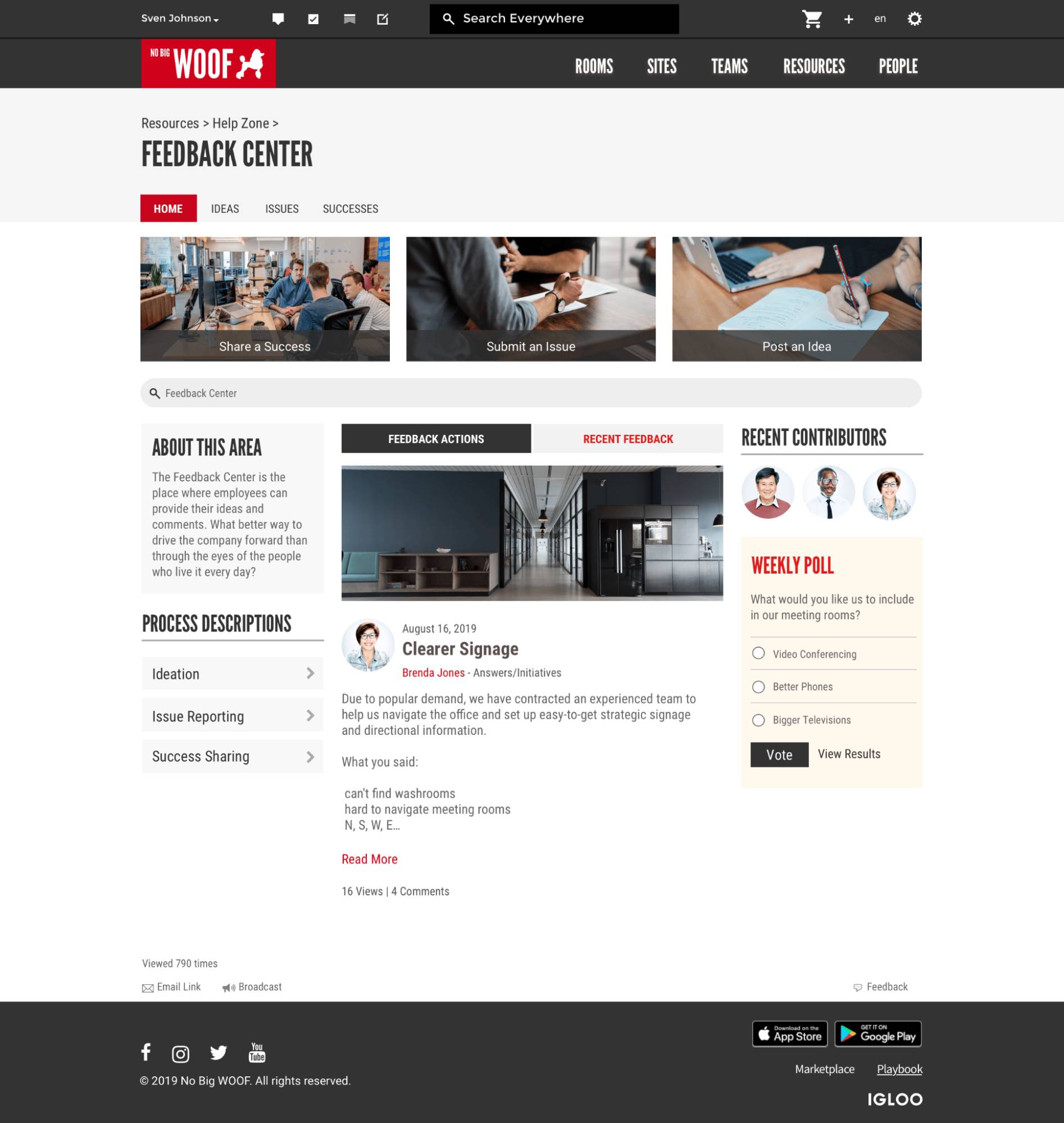
Unlike public social media platforms like LinkedIn or Facebook, corporate social networks are only accessible to people within your company.
They differ from traditional enterprise intranets, which tend to be static, top-down communication tools. A corporate social network is a workspace built for real-time interaction, not just company announcements.
Most platforms include functions like:
Activity feeds for updates and discussions
Group chats and project-based channels
@Mentions and tagging to loop in the right people
Forums for topic-based discussions and Q&A
File sharing and commenting
Wikis or knowledge bases for searchable documentation
Integrations with standard workplace tools (like Google Drive or Microsoft Teams)
Many corporate social networks primarily target large enterprises. Still, smaller organizations are increasingly adopting them to streamline communication and strengthen corporate culture.
Note: Some people describe tools like Slack and Microsoft Teams as corporate social networks, but they’re primarily instant messaging and collaboration tools. True corporate social networks emphasize features like activity feeds and wikis rather than just chat functionality.
Use cases for corporate social networks in small teams
A corporate social network can support everyday teamwork in ways that go beyond traditional communication tools. Here are a few scenarios where small and medium-sized businesses (SMBs) use them to keep coworkers connected.
Download your guide to managing teams and scaling sales
Make company-wide updates easier to follow
Company-wide updates can be hard to communicate well. They usually happen infrequently, making them easy to miss among other messages and emails.
Coworkers might not see the updates at all. Or, they might see them but forget the details when they need to reference them.
A corporate social network offers a structured place to share company updates, such as a specific channel, page or pinned post in a central news feed.
This real-time visibility is beneficial for teams in different time zones who aren’t always online at the same time.
Help new hires get up to speed
New employees absorb a lot of information during the onboarding process. They need to understand past project decisions, current workflows and who handles different responsibilities.
This information usually lies scattered across different channels and shared documents that can be hard to piece together.
Instead of asking repeated questions or trying to connect information from different sources, new hires can browse the corporate social network software to get context at their own pace.
They can read past project discussions and figure out who handles what without interrupting busy teammates.
Some platforms even include wikis or searchable discussion threads. These features make it easier to understand workflows and who to contact for specific help.
Strengthen team culture across locations
Remote and hybrid teams miss out on casual interactions that happen naturally in an office. People don’t overhear conversations about project wins, which can boost morale.
A social networking platform brings these moments back into view in the digital workplace. Employees recognize each other’s work, share project updates and celebrate milestones.
Creating a shared sense of what’s happening across the company improves the employee experience. This visibility is crucial for remote employees who might otherwise only interact with their immediate project teammates and miss the bigger picture of company culture.
Improve visibility without micromanaging
Managers often don’t know what their team is working on without asking for updates. To understand project progress, they must check multiple tools, scroll through chat histories or schedule meetings.
This extra work for management oversight can make team members feel like they’re being watched.
A corporate social network helps reduce business silos. It makes team updates more transparent without requiring constant check-ins.
Managers can scan recent posts and shared content to track progress. Team members post updates as part of their workflow instead of preparing formal reports.
Having one place to share information cuts extra status meetings and “where are we on this?” messages. Everyone stays informed without creating more admin.
Note: If your team is sales-focused, consider a customer relationship management (CRM) platform like Pipedrive. The tool logs deal updates, pipeline changes and sales activities, making them visible to managers without requiring separate status meetings.
Is a corporate social network right for your business?
Not every team needs a corporate social network. For some, it can be a functional layer that boosts visibility and avoids missed updates. For others, it just adds another place to check for information.
The key is identifying where your communication gaps are. Here’s a quick way to tell if a corporate social network is likely to support your small business:
A corporate social network might be a good fit if… | You probably don’t need one if… |
Your team has 50+ people or multiple departments | You’re under 20 people and mostly located in the same place |
Important updates often get missed or repeated | You already share updates consistently across tools |
You’re hiring often, and onboarding is messy | New hires get up to speed quickly using existing docs or Slack |
Managers struggle to get visibility into what’s happening | You already use dashboards or async updates effectively |
There’s confusion about where updates should live | You have clear norms for what goes where |
If you think a corporate social network might be a good fit, here are a few questions to ask before you evaluate specific platforms:
What specific communication problems are you solving? Get specific. Are people missing announcements? Do new hires ask the same questions repeatedly? Write down exactly what you’re trying to fix.
Are your current tools underused or genuinely falling short? If your team isn’t fully using Slack or email, adding another platform won’t help. But if essential updates get buried or information is hard to find, you might need something designed for the job.
Will your team actually adopt and sustain a new platform? Be honest about your team’s track record with new tools. Do people embrace changes, or do they tend to abandon platforms after a few weeks? Consider whether your team will see enough value to stick with it.
Do you have someone who can champion and manage it? Corporate social networks need someone to set the tone and encourage participation. Without a dedicated person to guide adoption, even the best platform can become a ghost town.
Take time to answer these questions before you start comparing features and pricing. Clarifying these fundamentals will help you choose the right network plan.
Lighter alternatives to try before a corporate social network
Before you commit to a dedicated platform, test whether small changes to your existing tools can do the job.
Low-effort alternatives can help you build better communication habits without extra software or complexity. If they’re not enough, that’s a strong sign that a corporate social network might be worth exploring.
Here’s how to go about testing alternative tool options:
Try this… | To improve… |
Use Pipedrive to leave deal notes, tag team members and create shared dashboards | Task management and sales team collaboration |
Create a dedicated Slack channel for team updates or async check-ins | Reducing status meetings and centralizing updates |
Use Notion or Confluence for searchable internal documentation | Onboarding, knowledge sharing and reducing repeat questions |
Record Loom videos or write weekly wrap-ups for async leadership updates | Transparency from leadership without clogging inboxes |
For example, if you’re an SMB sales manager, use Pipedrive’s Insights dashboards to align the team and leadership on progress without a social network.
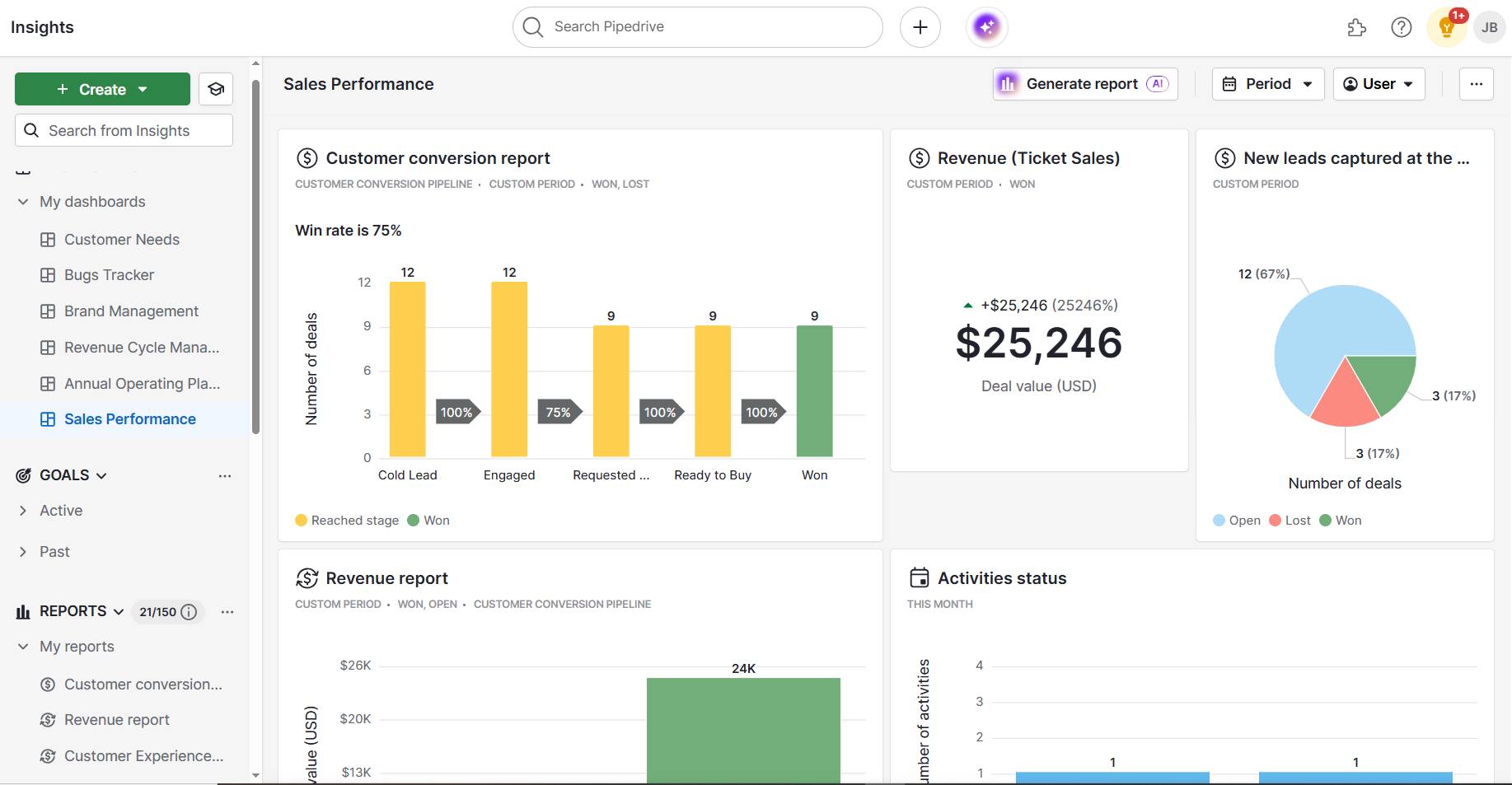
Create different dashboards directly in the CRM to:
Show live sales pipeline health
Track individual sales performance
Analyze monthly sales goals versus actual results
Customize each dashboard with relevant reports to display precisely what you need. Use Pipedrive’s sharing options to give access to specific internal team members or even external stakeholders (via a public link).
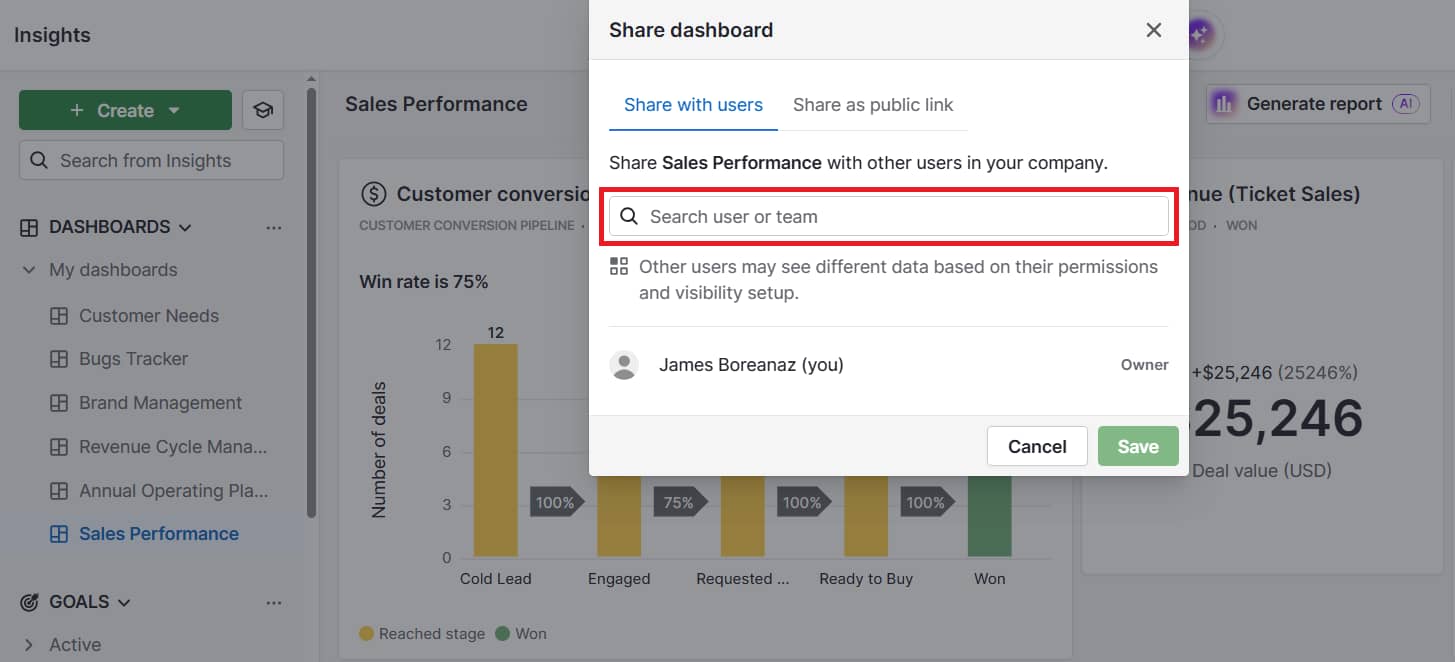
Everyone who needs visibility can find the same up-to-date data without asking for updates or searching through chat threads.
Next, find out how to approach effective network adoption if you decide that your company would benefit from one.
Best practices if you move forward with a corporate social network
To increase the chances of successful adoption and avoid tool fatigue, take a thoughtful approach from the start.
1. Start with one or two clear use cases
Focus your rollout on simple activities like company-wide updates or major team wins to limit overwhelm. Encourage employees to ease into the platform without feeling pressure to use it for everything right away, making it easier to build habits.
A corporate social network is instrumental when collaboration goes beyond individual teams.
Say you want to facilitate ongoing interaction between sales and marketing, customer success and product teams. A dedicated social network platform fills that gap, reinforcing company culture and ensuring transparency across distributed teams.
You might not need a separate tool if your main goal is to coordinate sales activities alone. Pipedrive already offers simple ways for sales reps to collaborate directly within deals, contacts and projects through mentions and comments.
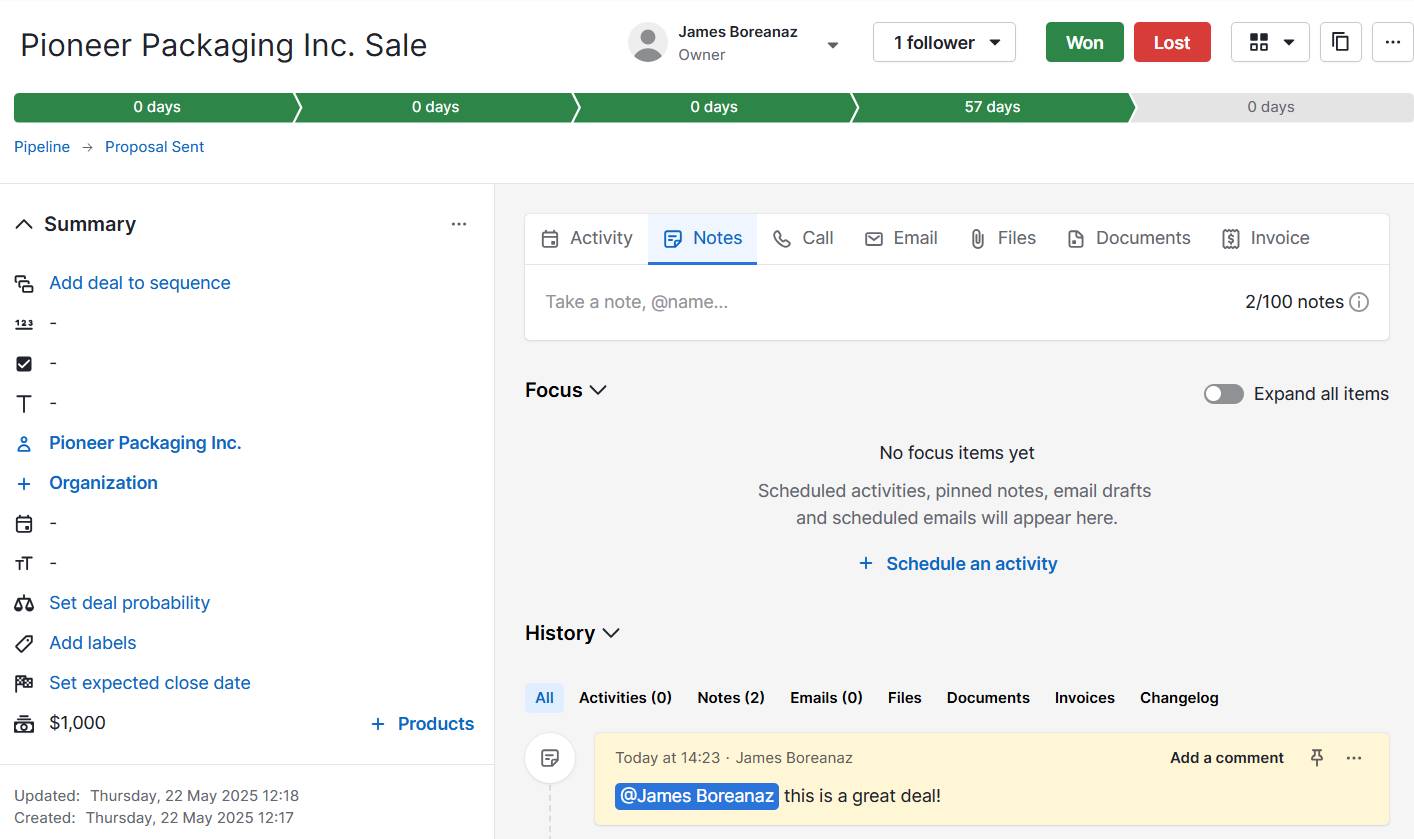
CRM notifications ensure nothing important gets missed, while permissions keep sensitive company data secure.
Ultimately, your use cases and business needs will determine how far you must go.
2. Make sure leadership participates and sets the tone
When leaders actively use the corporate social network, it signals the importance of the platform to the rest of the company. This practice encourages employees to join in and helps build a positive culture around the tool.
Offer practical suggestions for how to show up to make participation easy. Lists of content ideas or templates remove the guesswork. They help C-level executives and department heads post consistently, even when they’re busy or unsure what to say.
3. Define what content belongs on the corporate social network
A clear corporate social networking policy helps employees understand what to post on the network versus other platforms. Avoiding duplication and confusion keeps communication organized, especially as you add more use cases.
For example, you might decide to keep sales-specific comms within your CRM system. Pipedrive’s deal detail view lets sales reps track deal progress, log communication and find key documents in one place.
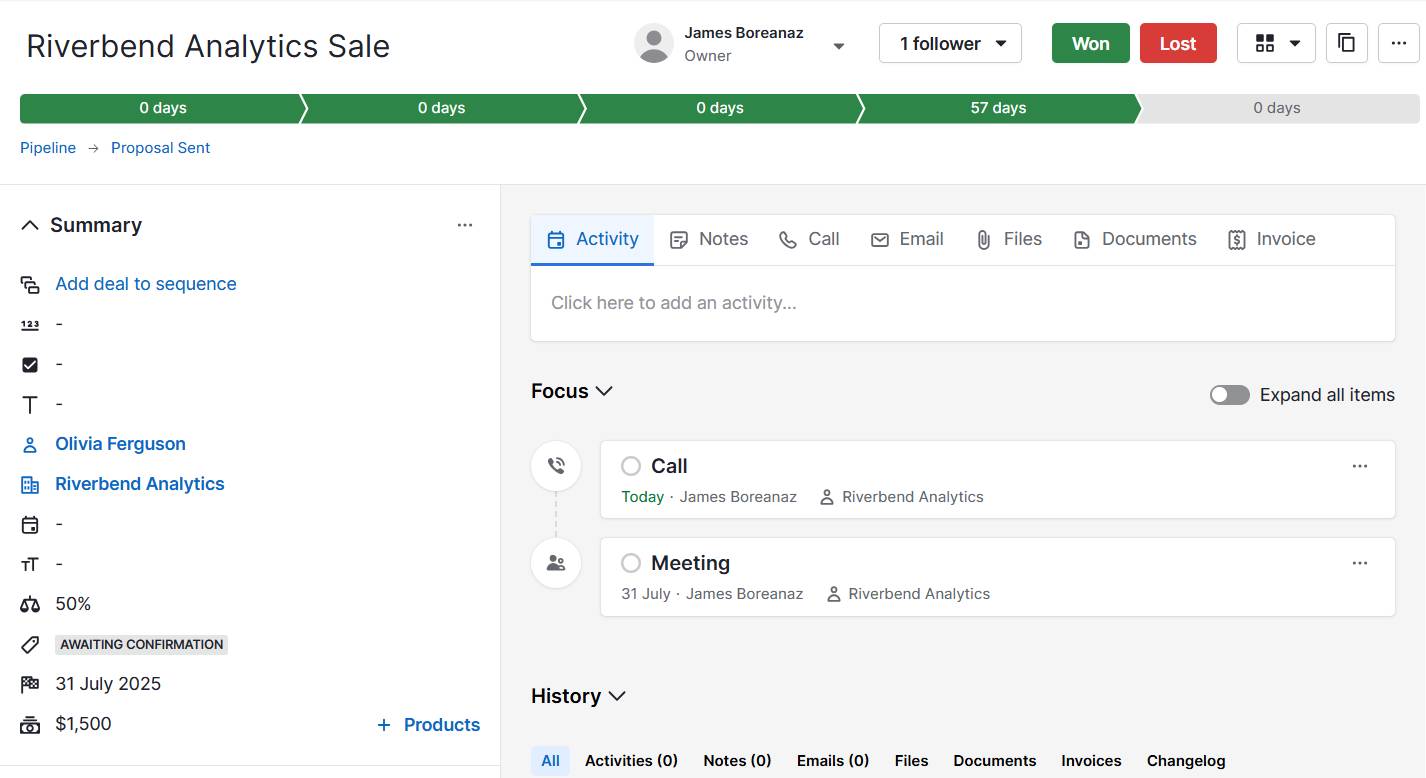
For bigger updates that benefit the wider company, like closing a deal, reps can share the news on the corporate social network so everyone can celebrate the win.
4. Train your team and encourage consistent usage early on
Provide training sessions to cover the basics and share clear examples of how the network platform supports employees’ day-to-day work. Regular refreshers help everyone feel confident using the platform.
Consistency in early usage increases the chances that the network will become part of daily work. The more employees see the platform’s value in their daily work, the more likely it is to become part of your company’s communication habits.
5. Review adoption metrics and adjust your approach as needed
Keep an eye on how actively employees use the corporate social network and what types of content get the most engagement. Look for signs of what’s working, like increased participation in discussions or positive feedback on updates. Also, look for areas where adoption is slower.
Use these insights to refine your approach. For example, if engagement is low, offer more guidance on using the platform or encourage leadership to post more regularly.
If certain posts drive more interaction, consider making them part of your ongoing communication strategy. Review the data regularly to make informed decisions that keep the platform valuable and relevant for your teams.
Focusing on these steps early creates a solid foundation that encourages lasting engagement. It also makes the internal social network a valuable part of the daily routine.
Corporate social network FAQs
Final thoughts
Effective internal communication drives team success, so make sure you implement tools that fit your company best.
A corporate social network provides a structured, real-time space for sharing updates and collaboration. If you decide to implement one, start small, involve leadership and set clear guidelines to boost adoption.
For a simpler way to improve teamwork and visibility across your SMB, try Pipedrive free for 14 days. It’s an easy way to keep teams aligned without adding complexity.





